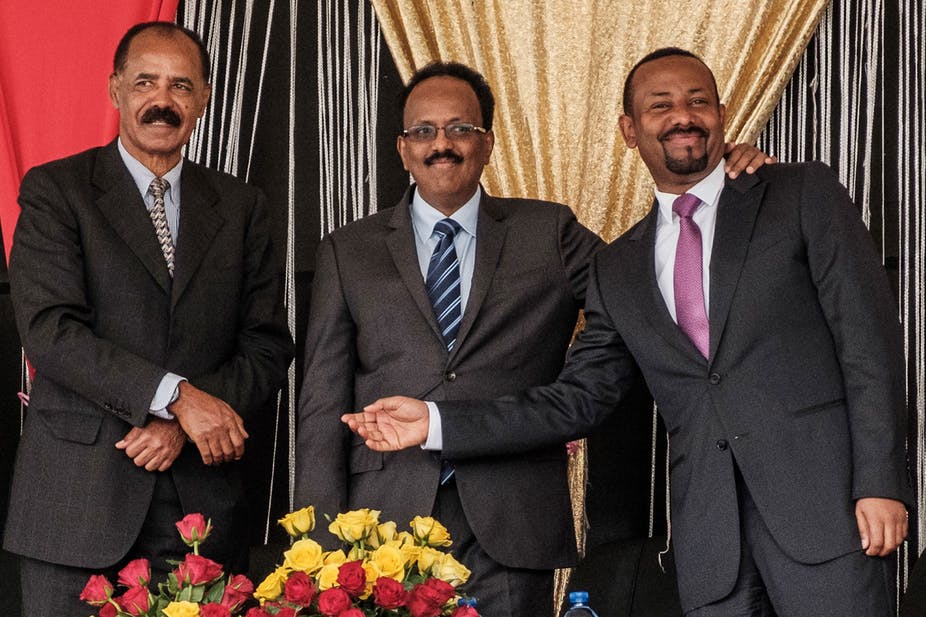Djibouti (HAN) October 25, 2020 – Regional Investment projects and financial initiatives. Why Hydropower Dam in Ethiopia Worries the triangle countries of Eritrea, Sudan and Egypt and angered President Trump of United States of America?Rackety trucks rush across Sudan’s border with its backwater neighbor of Ethiopian tribes, stirring up clouds of dust and drowning the tweets of tropical birds.
Chinese projects to construct roads in one of Africa’s poorest regions between Sudan and Amhara regional state of Ethiopia date back to 1974-1990 when Tigray (TPLF) and Eritrea (EPLF, ELF) was subject to a proxy war between the global Cold War superpowers (USA & USSR).
Nowadays, China is its largest foreign investor and aid provider in a series of infrastructure projects, claiming to change local life for better in Ethiopian highlanders. “Regarding the Grand Ethiopian Renaissance Dam issue, we hope the differences between the two nations could be resolved through dialogue and peaceful negotiations,” Zhang Gaohui, the chief of political affairs at the Chinese Embassy in Ethiopia’s capital, Addis Ababa, said. But critics have raised serious concerns about the impact of the projects, pointing at their gigantic price tags and environmental issues, among others. The Djibouti-Ethiopia railway cost almost $4.5 billion, 30% of which was financed by Djibouti with loans. 95% of Ethiopia’s trade passes through Djibouti, accounting for 70% of the activity at the Port of Djibouti.
China is Ethiopia’s biggest trading partner, including Dam projects and Railways. It’s also estimated to have provided more than $16 billion of loans to the former EPRDF regime led by TPLF, including a $1.2 billion credit to build transmission lines that will link to the plant. The electricity will help power a Chinese-funded railway that connects landlocked Ethiopia to ports in neighboring Djibouti.In Ethiopian regions of Oromia, Amhara and Tigray, Chinese money fuels growth in every sector, but it is agriculture that remains the largest branch of the economy in the central states (Oromo, Guraga, Sidamo, Somali and Harari), accounting for almost 50% of their GDP. China’s engagement in Ethiopia can potentially transform the region, but at what cost?
In 2019 the railway transported 84 073 passengers and generated US$1.2 million in revenue from that service, less than in 2018. In 2019 the railway generated US$40 million in both passenger and cargo revenue, far below the operating cost of US$70 million. During the first half of 2020, the railway transported 0.7 million tonnes of freight.In proximity of this hectic trade route, people from tribes such as Oromo, Amara, Somali, Guraga, Sidamo and Afar continue to cultivate old-fashioned lifestyles. After the TPLF government forced them to resettle from remote mountainous areas in the 1990s, tribes (The Bodi, the Mursi and the Northern Kwegu) have slowly become integrated in the process of chinese style communist state building- to understand the impacts of the dam and agricultural initiatives like the Kuraz Sugar Development Project.For the indigenous, a host of problems, including hunger, poverty, conflict and human rights abuses, have filled the void, says Anuradha Mittal, executive director of the Oakland Institute, a policy think tank.
“The floods of the River Omo have ended,” Mittal told Mongabay. “There’s such grief and pain.”Bibala, a member of the Mursi community, said that before the dam’s construction, “the land was full of grain.”
“We had a lot of flood water in the Omo River and we were very happy,” he told researchers. “Now the water is gone and we are all hungry. Later it will be death.”
CopyRight @Geeska Afrika Online 2020
han@geeskaafrika.com


Leave a Reply